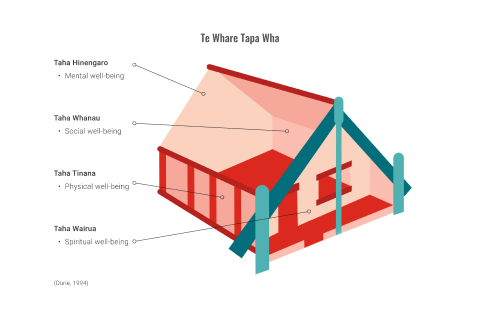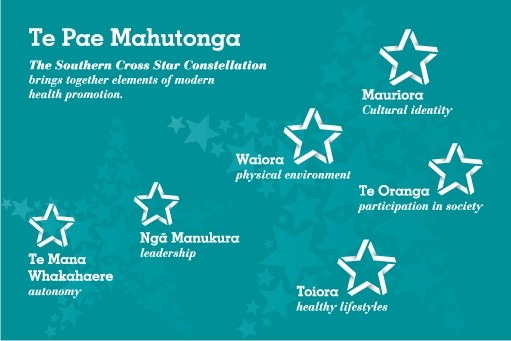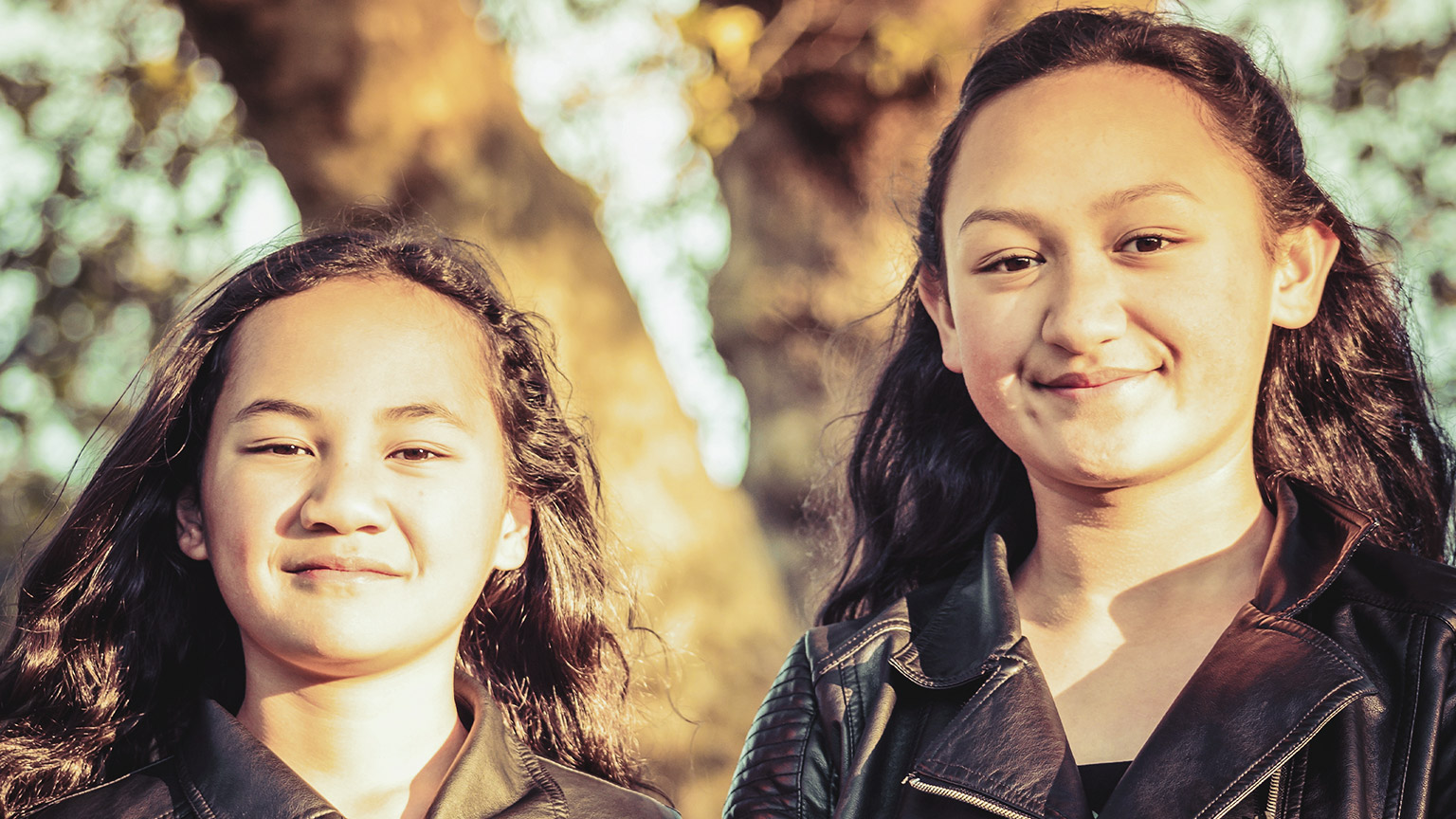Health can be defined as a state of complete physical, mental and social wellbeingWorld Health Organisation, WHO (1948)
Why learn about health models
- Help us understand what health is
- Help us to understand health behaviour
- Help us to understand the causes of illness or disease
- Give us a framework around which to deliver services
- To predict and explain individual’s changes in health
- To guide the health promotion and disease prevention
- Help us to understand different cultures perceptions of health
- Help us to become culturally competent
There are various health models that are used globally, coming with it a wealth of knowledge that help us, essentially live our best life.
Much knowledge and wisdom can be sought from Indigenous cultures regarding health and wellbeing.
Let us take a look at some of these models.
Hauora is not a destination; it is a way of life.Unknown
Before we look into health and wellbeing, we are going to touch on Hauora.
Some of you may be familiar with the term Hauora, but for those who are not, it is a unique philosophy of life traditional in Māori culture. Understanding and respecting this philosophy is important.
Hauora is comprised of the following four dimensions.
Taha tinana - the physical dimension
Physical wellbeing as well as the physical body, its growth, development, and ability to move, and ways of caring for it.
Taha hinengaro - the mental dimension
Mental and emotional wellbeing including coherent thinking processes, acknowledging and expressing thoughts and feelings, and responding constructively.
Taha whānau - the family dimension
Social wellbeing exploring family relationships, friendships, and other interpersonal relationships; feelings of belonging, compassion, and caring; and social support.
Taha wairua - the spiritual dimension
Spiritual wellbeing and the values and beliefs that determine the way people live, the search for meaning and purpose in life, and personal identity and self-awareness. (For some individuals and communities, spiritual wellbeing is linked to a particular religion; for others, it is not.)
Each of the four dimensions influence the other, therefore if one dimension is not met, it will impact another and another and on it goes.
A person’s culture affects their perceptions of health. There are several models that can be observed when it comes to overall health, these include:
- Te Whare Tapa Whā model
- Te Wheke-The Octopus
- Te Pae Mahutonga
These models of wellbeing are taonga (treasure) to Aotearoa and the surrounding pacific nations – keep this in mind as you are completing your assessment. Remember if you are to create a traditional or esports team with players from New Zealand and surrounding pacific nations these models of wellbeing will help build that relationship.
Te Whare Tapa Whā is a Maori model of health and is closely associated with Hauora comprising of similar concepts.
We are going to take a look at how this model links with eSports.
The physical dimension – Taha tinana
Your physical wellbeing has an important impact on how you perform in eSports. Its impact cannot be understated both as a competitor and as you venture into business within eSports if you are creating your own personal brand. You will be the face of the brand and many people within the community will turn to you for inspiration and education. You need to ensure you are taking care of yourself physically to maintain your brand- in other words. Practice what you preach.
Consider how much of your time is spent in front of a device? When you are spending hours on end in a chair at a desk, it is likely your muscles will start to cease and you will experience pain in various areas of the body, therefore, this impacts how your body will physically function on a day-to-day basis.
The mental dimension – Taha hinengaro
One of the most important dimensions is the mental dimension. The power of the mind is not to be underestimated and has more of an impact on our lives than we give it credit for.
We have all been there, but for a moment, think of a time when your head wasn’t in it. Whether in a tournament or in a simple daily task. The mind often wonders when we are feeling overwhelmed and stressed and this impacts our judgment, concentration, and interactions with others. You must practice mindfulness, acknowledge how you feel during stressful times, and make space to address it.
The family dimension – Taha whānau
In many ways, your team is much like your family. You spend a lot of time with them and get to know them professionally and personally. You learn the skills to work together, strategise and lead (if you choose a career in coaching). The support you receive from your team along with your significant others, plays a fundamental role in enriching your lifestyle.
The spiritual dimension – Taha wairua
We all have values that drive us in our everyday lives. Our values often influence the decisions and shape our identity. Within your team, you will meet people who have their own set of values they hold. It is important to acknowledge these values may not always be aligned with your own, and if they do not, you must ensure there is a happy medium for them to work cohesively together. Māori culture in particular is rich in its roots and the people have strong connections to their spirituality. It is essential you and your team are mindful and respectful of this.
The following diagram illustrates how these dimensions work together and impact each other.

Starting your own business or brand will likely be heavily motivated by your values; you will carry them across to shape the brand you are trying to create. People will be getting to know who you are and many will look up to you. Ensure your values are illustrated appropriately and as true to yourself.
The following video highlights how this model is used by trainers to support their students on their learning journey.
Watch: Te Whare Tapa Whā (5.54 minutes)
Looking at the video, we can see how the dimensions have been used to harness educational growth and success.
Once you have understood the concept, you will be able to apply it to many aspects of your life, including professional ventures.
Forum Activity: Health and Hauora Discussion
Consider what you have learnt about player health and Hauora. Discuss and note down what you think the relationship is between each of the walls of the Whare and professional eSports player health and Hauora.
Your response should include:
What, as a player and coach, will you/do you need to do to embrace this model of health?
Submit your responses to the
Learning Activity Forum to engage in discussion with your peers.
“Te Wheke is another model of health used in Māori culture and was developed by Rose Pere. This model of health acknowledges the link between the mind, the spirit, the human connection with whānau (family), and the physical world in a way that is seamless and uncontrived.”
Fun fact! Did you know, until the introduction of Western medicine there was no division between them?
“The concept of Te Wheke, the octopus, is to define family health. The head of the octopus represents te whānau, the eyes of the octopus as waiora (total wellbeing for the individual and family) and each of the eight tentacles representing a specific dimension of health. The dimensions are interwoven and this represents the close relationship of the tentacles.”
The tentacles represent each of the following:
- Te whānau
The family - Waiora
Total wellbeing for the individual and family - Wairuatanga
Spirituality - Hinengaro
The mind - Taha tinana
Physical wellbeing - Whanaungatanga
Extended family - Mauri
Life force in people and objects - Mana ake
Unique identity of individuals and family - Hā a koro ma, a kui ma
Breath of life from forbearers - Whatumanawa
The open and healthy expression of emotion.
Just like the octopus, our life balances not from one but from many sources of happiness and fulfilment. Think about how many times we had to surpass challenges because something or someone else was helping us out. This is the Essense of a balanced life, have more than one stream, know what makes you strong and rich as a person.
Talking about different streams, in business you need to take care of many aspects. To make sure you are not one dimensional for instance pitching or sharing your idea with people that think different from you is important, a good market research is needed for the project to be backed by reliable information, to make sure you thrive on any investment it is recommended to have more than one revenue stream... we can keep going with the examples.
The final model we will observe is Ta Pae Mahutonga, developed by Mason Durie. “Te Pae Mahutonga (Southern Cross Star Constellation) brings together elements of modern health promotion.
The model comprises the following four key health promotion tasks. Click on each of the headings to learn more about each of the key tasks.
Mauri ora rests on a secure cultural identity. Good health depends on many factors, but among indigenous peoples the world over, cultural identity is considered to be a critical prerequisite.
It is important to consider, that deculturation has been associated with poor health whereas acculturation has been linked to good health, therefore goal of health promotion therefore is to promote security of identity.”
Health should promote Te Ao Māori to have access to:
Original source: Durie, Mason (1999), ‘Te Pae Māhutonga: a model for Māori health promotion’, Health Promotion Forum of New Zealand Newsletter 49.
- Language and knowledge
- Culture and cultural institutions such as marae
- Māori economic resources such as land, forests, fisheries
- Social resources such as whānau, Māori services, networks societal domains where being Māori is facilitated not hindered
Waiora is linked more specifically to the external world and to a spiritual element that connects human wellness with cosmic, terrestrial and water environments. It is important to understand that good health is difficult to achieve if there is environmental pollution; or contaminated water supplies, or smog which blocks out the sun’s rays, or a night sky distorted by neon lighting, or earth which is hidden by concrete slabs, or the jangle of steel which obliterates the sound of birds.
Health promotion must take into account the nature and quality of the interaction between people and the surrounding environment. In this context health promotion is about harmonising people with their environments. It is about protecting the environment so that:
- Water is free from pollutants
- Air can be breathed without fear of inhaling irritants or toxins
- Earth is abundant in vegetation
- Noise levels are compatible human frequencies and harmonies
- Opportunities are created for people to experience the natural environment
Original source: Durie, Mason (1999), ‘Te Pae Māhutonga: a model for Māori health promotion’, Health Promotion Forum of New Zealand Newsletter 49.
Toiora –depends on personal behaviour and the daily risks that are taken. Risks are highest where poverty is greatest. Major threats to health come from the risks that threaten health and safety and have the capacity to alter human experience. Risk-laden lifestyles have well-known and largely preventable consequences.
The common risks many take that impact Toiora include:
- The patterns of nutritional intake
- The use of alcohol and drugs and tobacco use
- Unsafe roadway practices (seatbelts, helmets) reckless spending, disregard for the safety of others
- Sedentary habit- lack of exercise the use of unsound machinery, including motor vehicles
Risks are high where risk-taking behaviour is the norm within a whānau or community. Risks are more pronounced in populations which are youthful. Risks are increased if risk-taking behaviour is condoned or implicitly encouraged.
A shift from harmful lifestyles to healthy lifestyles requires actions at several levels and the key areas for consideration include:
- Harm minimisation
- Targeted interventions
- Risk management
- Cultural relevance
- Positive development.
Original source: Durie, Mason (1999), ‘Te Pae Māhutonga: a model for Māori health promotion’, Health Promotion Forum of New Zealand Newsletter 49.
Health promotion cannot be separated from the socioeconomic circumstances. Wellbeing is not only about a secure cultural identity, an intact environment, or even about the avoidance of risks. Te Oranga, is dependent on the terms under which people participate in society and on the confidence with which they can access good health services, or the school of their choice, or sport and recreation.
And while access is one issue, decision making and a sense of ownership is another.
Health promotion is about enhancing the levels of wellbeing, Te Oranga, by increasing the extent of Māori participation in society:
- Participation in the economy
- Participation in education
- Participation in employment
- Participation in the knowledge society
- Participation in decision making
Each of these four tasks is illustrated in the Southern Cross with the two pointers represent Ngā Manukura (community leadership) and Te Mana Whakahaere (autonomy).
Original source: Durie, Mason (1999), ‘Te Pae Māhutonga: a model for Māori health promotion’, Health Promotion Forum of New Zealand Newsletter 49."

Image sourced from: https://www.cph.co.nz/about-us/te-pae-mahutonga/
-
Mauriora
Cultural identity -
Ngā Manukura
Leadership -
Te Mana Whakahaere
Autonomy -
Te Oranga
Participation in society -
Toiora
Healthy lifestyles -
Waiora
Environmental protection
Fun fact! Did you know, Te Pae Māhutonga. Te Pae Māhutonga is the name constellation of stars popularly referred to as the Southern Cross. It is visible low in the night sky and identifies the magnetic South Pole. Te Pae Māhutonga has long been used as a navigational aid and is closely associated with the discovery of Aotearoa and then New Zealand.
Te Pae Mahtuonga and eSports business and health
As you will have learnt, this model focuses heavily on modern health promotion and impacts on wellbeing when certain needs are not met. If you are considering coaching, starting your own business and building a brand, it is important to factor in the four tasks of Te Pae Mahtuonga.
Consider cultural identity your own, and those around you- especially that of Māori culture who are strong and rich with tradition. This is a way of life for many Māori people, you must ensure you have shown respect and acknowledgement, demonstrated acceptance and understanding. Ensure when you are playing, coaching or working on your business, you are not losing sight of your own identity or getting lost. Always be true to yourself, your values and your identity- authenticity is crucial in all aspects of your life.
Consider your physical surroundings, how often do you connect with nature? And is the environment healthy and safe? It is very easy to become swept up with mountains of work, but do not sacrifice time spent outdoors.
Your own lifestyle and choices you are promoting to aspiring players or the general public (this is particularly important if you are creating your own brand). What risks are you prepared to take for your own health, will this be promoted and demonstrated through your practices you share? What is your own participation within society? Are you promoting positive decision-making practices. Consider what your current practises are, countless hours indoors glued to your desk, computer or device promotes sedentary habits and these habits can become difficult to break. It is these choices that can have an impact on your overall lifestyle.
